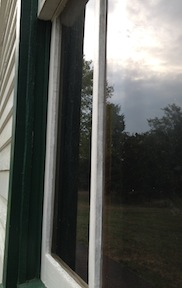A word about preservation at Manassas
 Preservation still ranks as one of the top concerns at Manassas National Battlefield.
Preservation still ranks as one of the top concerns at Manassas National Battlefield.
In the mid-1990s, preservationists averted potential disaster when they forced the Walt Disney corporation to scrub plans for a proposed history-oriented theme park in the Manassas area. (Joan Zenzen’s interesting Battling for Manassas outlines the battlefields long preservations struggles.)
Fortunately, the Civil War Trust has done some great stuff to preserve some key spots at Manassas. However, even their best efforts can’t stem the inexorable tide of suburban development that continues to reach north from the city of Manassas itself as well as west from Washington, D.C. The area beyond the battlefield to the west, around Groveton, has blossomed into strip malls, subdivisions, and highway interchanges, too.
“As with virtually all Eastern parks, Manassas vividly demonstrates that what goes on outside the boundaries of a park can have a profound effect on the quality of the experience inside the park,” says historian John Hennessy, author of Return to Bull Run, the definitive study of the battle of Second Manassas. “Manassas is in one major way fortunate: it has a large, round land base. When you’re in the heart of the park, even five decades from now, development will be well beyond the tree line, largely beyond visual impact.
“But still, that development will ultimately threaten the viability of the park by the traffic it will generate. If the immense traffic that travels the Route 29 and 234 corridors is not somehow redirected, eventually the pressure to widen those roads will be beyond resistance. And that will be the death of the park as we know it—true disaster.”
I lived in Warrenton, VA (Just south of Manassas) twenty-five years ago, when the area was nothing but horse farms. When I pass through that area using Route 17 toward Fredericksburg, VA the area does not even resemble the quiet little town it used to be. It is worse in Manassas area. That is not too bad a commute into D.C., where most of the population works. I think what saved the Battlefield was the housing bust, but now demand is on the rise for more housing in that area. Most of the houses go for over $300,000 and with any kind of land you are talking over $500,000 to over $1 million. Preserving battlefields is a real challenge. Balancing economic development over historical preservation tends to cause great conflict in communities.